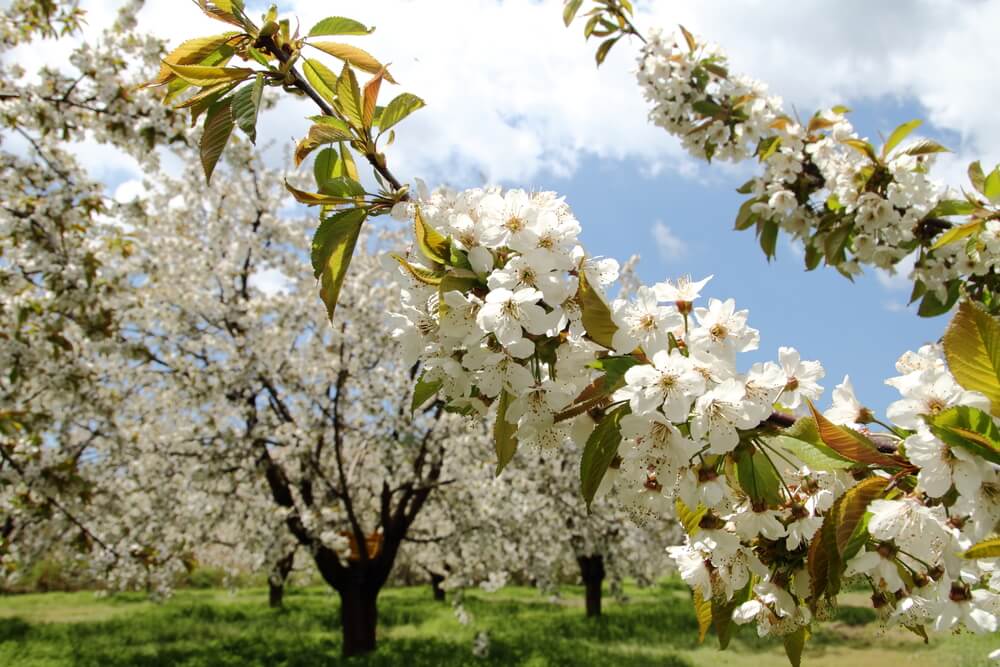Did you know that almonds are not nuts? They are the seeds of drupes, which are a type of fruit. The almond tree is native to Central Asia and the Middle East. Almonds have been cultivated for over 3,000 years. Today, they are grown in many parts of the world including California, Spain, Italy, Morocco, and Australia.
If you would like to grow your almond tree, there are a few things you need to know. First, almond trees need a lot of sunlight. They should be planted in an area that gets at least six hours of direct sunlight each day. Secondly, almond trees require well-drained soil. The best way to ensure that your tree has well-drained soil is to plant it in a raised bed. Finally, almond trees need to be watered regularly. They should be watered deeply and allowed to dry out completely between waterings.
With a little bit of care, you can grow your almond tree and enjoy fresh, delicious almonds for years to come!
How Much Water Does an Almond Tree Need?
Almond trees need a lot of water, especially when they are first planted. They should be watered deeply and allowed to dry out completely between waterings. Once established, almond trees can be watered less frequently. However, during periods of extended drought, they will need to be watered more often to ensure that they do not become stressed.
When watering an almond tree, it is important to soak the roots thoroughly. This can be done by using a soaker hose or drip irrigation system. If you water with a garden hose, make sure to direct the water to the base of the tree and not to the leaves or branches. Overhead watering can lead to fungal diseases such as powdery mildew and leaf spot.
What Type of Fertilizer Is Best for an Almond Tree?
Almond trees need a fertilizer that is high in nitrogen. A good rule of thumb is to use a fertilizer that has an N-P-K ratio of 4-1-2. Apply the fertilizer around the drip line of the tree (the area where the tips of the branches reach when extended outward). Be sure to follow the manufacturer’s instructions on how much fertilizer to apply and how often to apply it. Too much fertilizer can burn the roots of the tree and too little will not provide enough nutrients for proper growth.
When Is the Best Time to Plant an Almond Tree?
Almond trees can be planted at any time of year. However, spring is generally considered to be the best time to plant. This is because the tree will have a chance to establish itself before the hot, dry summer months arrive. If you live in an area with a short growing season, it is best to plant your tree in the spring so that it has enough time to develop a strong root system before winter arrives.
Where Is the Best Place to Plant an Almond Tree?
When choosing a location for your almond tree, it is important to consider the amount of sunlight it will receive. Almond trees need at least six hours of direct sunlight each day to produce nuts. They also prefer well-drained soil. The best way to ensure that your tree has well-drained soil is to plant it in a raised bed. This will also help to protect the roots from flooding during periods of heavy rain.
When planting an almond tree, it is important to dig a hole that is twice as wide as the root ball and just as deep. This will give the roots plenty of room to spread out and encourage proper growth. Be sure to backfill the hole with loose, well-drained soil. Once the tree is planted, water it deeply and mulch around the base to help retain moisture.
How to Plant an Almond Tree?
Almond trees are a type of nut-bearing tree that produces delicious, edible nuts. The tree is native to the Mediterranean region and has been cultivated for centuries. Almonds are a popular ingredient in many recipes and are used in confectioneries, cosmetics, and even as medicine.
Almond trees can grow to a height of 20-30 feet and have a lifespan of 50-60 years. They prefer full sun and well-drained soil. Almond trees are generally propagated by grafting or air-layering.
When planting an almond tree, choose a location that gets plenty of sunlight. The tree should also be planted in well-drained soil. Add some organic matter to the soil before planting to help improve drainage.
Dig a hole that is twice the width of the tree’s root ball and just as deep. Place the tree in the hole and backfill it with soil. Water the tree deeply immediately after planting.
Mulch around the base of the tree to help keep the roots cool and moist. Almond trees need to be watered regularly, especially during dry periods. They also benefit from occasional fertilization with a balanced fertilizer.
Harvesting almonds typically takes place in late summer or early fall. To harvest, simply shake the tree branches or use a pole to knock the nuts to the ground. Pick up the nuts and remove any debris such as leaves or sticks.
Almonds can be eaten fresh, roasted, or used in cooking. They can also be ground into flour or made into almond milk. Store almonds in a cool, dry place.
How to Protect Almond Tree From Squirrels?
Almond trees are a favorite food source for squirrels. If you have an almond tree in your yard, you may want to take steps to protect it from these pesky rodents. One way to deter squirrels is to wrap the trunk of the tree with chicken wire. Be sure to extend the chicken wire at least 12 inches out from the trunk and up into the branches.
Another way to keep squirrels away from your almond tree is to spray the leaves and branches with a commercial repellent such as Bobbex or Ropel. You will need to reapply the repellent every few weeks, especially after rainstorms.
If you have a lot of squirrels in your area, you may want to consider planting your almond tree in a large cage. The cage should be made of heavy-duty wire and should extend at least 2 feet out from the trunk of the tree in all directions.
What Are Some Diseases That Affect Almond Trees?
Almond trees are susceptible to several diseases, including brown rot, powdery mildew, and root rot. Brown rot is a fungal disease that affects the flowers and fruit of the tree. Powdery mildew is a white or grayish powder that covers the leaves and branches of the tree. Root rot is caused by fungi or bacteria that attack the roots of the tree.
Each of these diseases can be devastating to an almond tree. Brown rot can cause the flowers and fruit to wither and die. Powdery mildew can cause the leaves of the tree to turn yellow and fall off. Root rot can kill the tree.
To prevent these diseases from occurring, it is important to plant your almond tree in an area that has good drainage. Be sure to choose a location that gets plenty of sunlight. Avoid planting the tree too close to other trees or shrubs.
Prune your almond tree regularly to remove any dead or diseased branches. Destroy any fallen leaves or fruit that may be infected with the disease. If you see signs of disease on your tree, contact a professional arborist or tree care specialist for treatment options.
What Are Some Pests That Affect Almond Trees?
Almond trees are susceptible to several pests, including aphids, scale insects, and mites. Aphids are small, pear-shaped insects that feed on the sap of the tree. Scale insects are small, hard-shelled creatures that attach themselves to the branches of the tree. Mites are tiny spider-like creatures that can cause damage to the leaves of the tree.
Each of these pests can be detrimental to an almond tree. Aphids can cause stunted growth and yellowing of the leaves. Scale insects can weaken the tree and make it more susceptible to disease.
How to Prune an Almond Tree?
Pruning an almond tree is important for its health and vigor. Pruning also helps to produce larger, healthier nuts. The best time of year to prune your almond tree is in late winter or early spring before the new growth begins.
To prune your tree, start by removing any dead, diseased, or damaged branches. Next, trim back any branches that are rubbing against each other or crossing over one another. Finally, cut back any branches that are growing towards the center of the tree.
When pruning, be sure to make clean cuts at a 45-degree angle just above a bud or node. Avoid leaving stubs, which can lead to disease problems. After you have finished pruning, remove all of the clippings from the area around the tree.
Where Can You Grow Almond Tree?
Almond trees are native to the Mediterranean region and can be grown in USDA hardiness zones 6-9. They prefer full sun and well-drained soil. Almond trees cannot tolerate wet or soggy soil.
When choosing a location to plant your tree, be sure to select an area that gets at least 8 hours of sunlight per day. The tree will also need room to grow, so choose a location that has plenty of space. Avoid planting trees too close to buildings or other structures.








